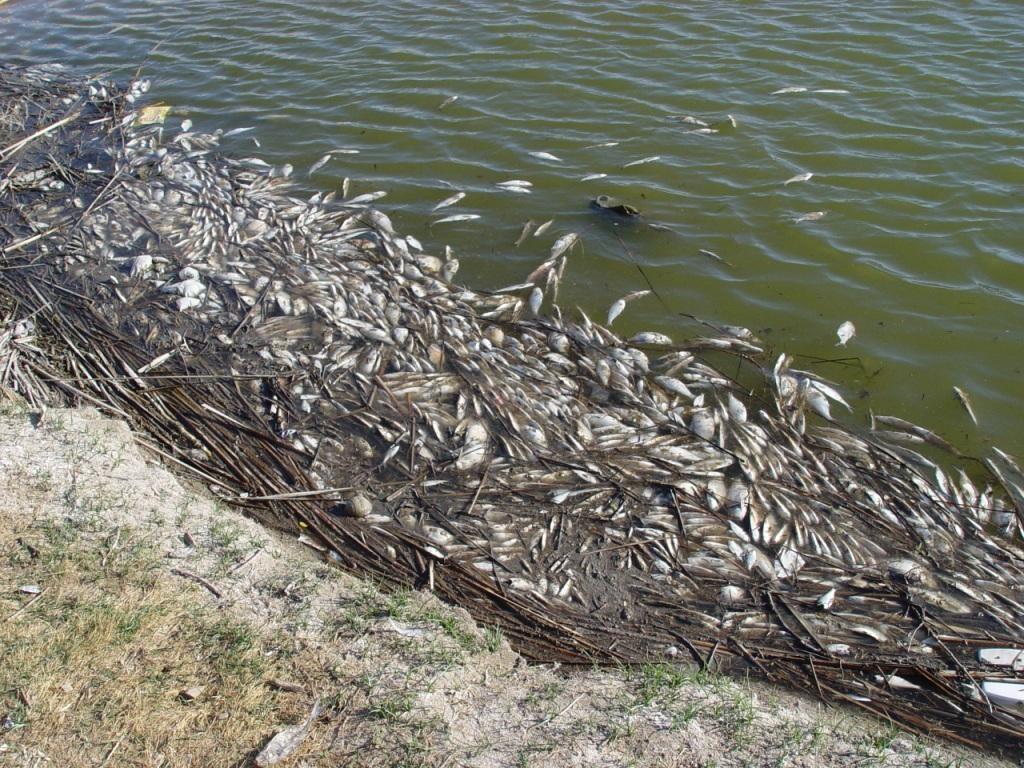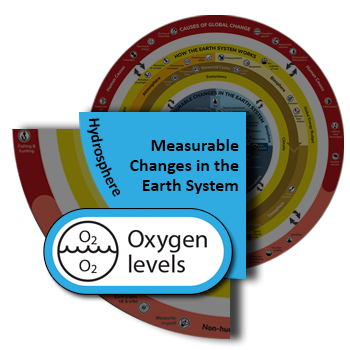The level of oxygen refers to the amount of oxygen present in the atmosphere or water. Oxygen is produced by photosynthesizing organisms that live in the ocean, in fresh water, and on land. These organisms include bacteria, algae and plants. Photosynthesizing algae in the ocean produce around 70% of oxygen in the atmosphere. There was very little oxygen in the atmosphere or in the ocean prior to the evolution of photosynthesizing bacteria that produce oxygen. The rise of oxygen re-directed the evolution of life on Earth, and today the vast majority of land, freshwater, and oceanic organisms require oxygen for respiration, the biochemical process that generates energy from food.

Fish that died due to low oxygen levels. Credit: USGS
In contrast, prior to the rise of oxygen about 2.5 billion years ago, oxygen was toxic to almost all early forms of life on Earth.
Atmospheric oxygen levels are very slowly decreasing today due to the burning of fossil fuels, which consumes oxygen, and deforestation which reduces oxygen production, but not enough to alter biological processes. However, in aquatic environments, decreased water oxygen levels, which can be caused by the human input of excess nutrients (see below), can decrease species populations and alter ecosystems.
Oxygen in the atmosphere varies with altitude, but is otherwise uniformly distributed. However, oxygen levels can vary significantly in marine and freshwater habitats, and can be affected by various human activities and environmental phenomena:
- Most of the oxygen in the ocean enters from the atmosphere, or is generated in the surface waters, where it is then transported to deeper water. Thus, ocean water must circulate to bring oxygen to organisms that live at depth. For this reason, changes in ocean circulation patterns caused by climate change, for example, can affect how much oxygen reaches deep waters, which in turn can alter those deep water ecosystems.
- Temperature affects the amount of oxygen in water because warm water holds less oxygen than cold water. Thus, global warming can reduce oxygen in the ocean, lakes, rivers and streams, leading to changes in species populations.
- Increases in the amount of nutrients, especially nitrogen and phosphorous, in the water can lead to decreased oxygen levels. The nutrients are typically washed in from land, and can be released from erosion or derived from fertilizers used for agricultural activities. These nutrients increase productivity, especially via algae growth. When the algae die they are consumed by bacteria which, if the algal biomass was large enough, can consume most of the oxygen, killing fish and other species. This process is known as eutrophication.

This graphic shows how nutrient-rich runoff from land can result in a cascade of changes that lead to hypoxic (low oxygen) conditions in aquatic environments. Credit: NOAA
Can you think of additional cause and effect relationships between oxygen levels and other parts of the Earth system?
Visit the photosynthesis, evolution, and species interactions pages to explore more connections between the biosphere and other global changes.
Investigate
Learn more in these real-world examples, and challenge yourself to construct a model that explains the Earth system relationships.
